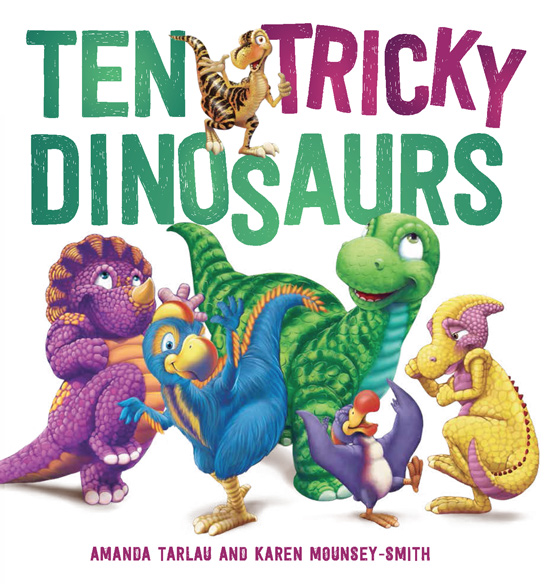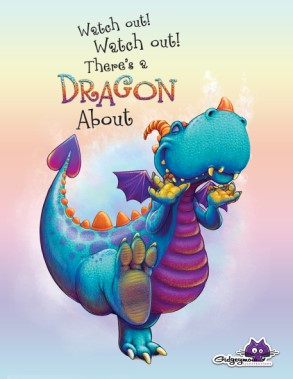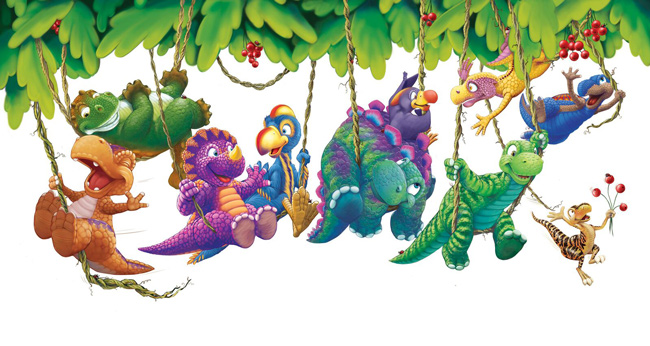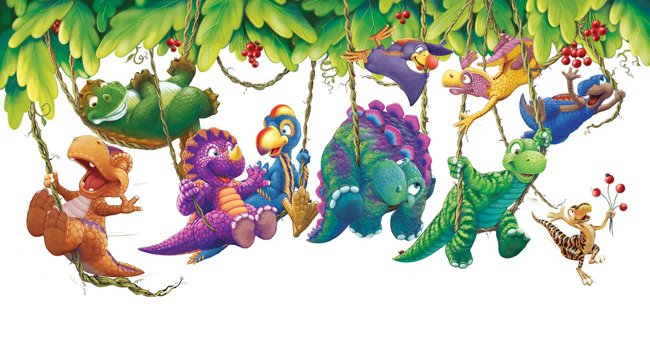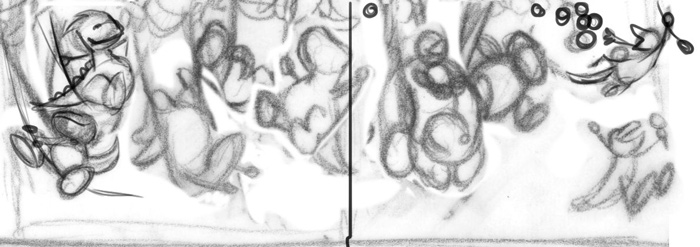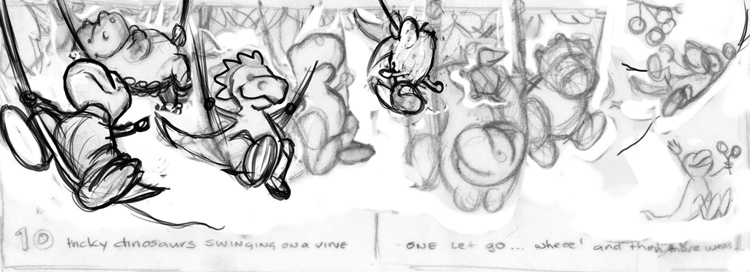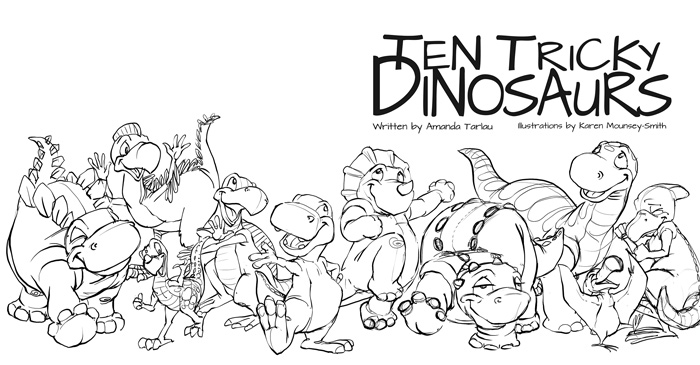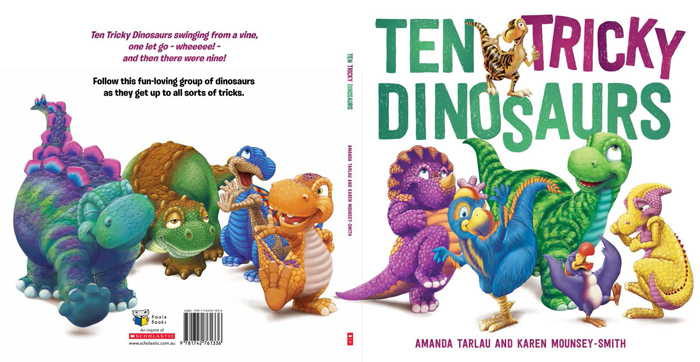words by Amanda Tarlau
illustrated by Karen Mounsey-Smith
– published by Koala Books –
I’ve asked each of the creators of the children’s counting book Ten Tricky Dinosaurs about its development and publishing pathway. It’s a delight and guaranteed to become a child’s favourite, re-read dozens of times and kept for ever. The author, Amanda Tarlau, is also the Art Director and Book Designer at Koala Books, an imprint of Scholastic Australia, who have published it, and it has been colourfully and beautifully illustrated by Brisbane artist Karen Mounsey-Smith.
First, Amanda…
Peter : Amanda, did the idea for this book come to you in an inspired moment and then written and pitched to the Koala team, or was the publisher wanting a dinosaur counting book and you offered to write one, or…? How did it come to be written?
Amanda: Ten Tricky Dinosaurs came about after a conversation with Gordon Jackson, the now retired publisher of Koala Books. He was looking to fill a niche in the market with a new dinosaur counting book and although I am chiefly a designer, I am a bit of a closet writer, with many notebooks filled with stories I have written for my children. I volunteered to have a go and started writing it on the train ride home that evening. A few train trips later and Ten Tricky Dinosaurs was born.
Peter: Amanda’s website: https://www.dianelladesign.com.au/
Peter: As in blockbuster movies and the best books of every genre, each major episode and the end of the story is surprising but inevitable, and for maximum child and reader appeal you have added numerous alliterative touches and written in rhyme. The young dinosaur friends adventure across a range of landscapes with the group getting smaller at each page turn, but what appears to be a ‘simple’ text and story, never is, and I’m sure some lines were changed many times in the writing and editing process. Can you give us an example of alternative versions that you considered for a line or two?
Amanda: Ten Tricky Dinosaurs is based on a counting rhyme and the first line of each couplet ends with a number. As is often the case, sometimes words don’t have many suitable rhyming partners and one such word was seven. Besides the inevitable ‘heaven’, I couldn’t make this rhyme work for quite a while. Then I happened upon ‘Kevin’ and thought that would be a fun name for one of the dinosaurs.
8 excited dinosaurs singing ‘Happy Birthday Kevin’
One gobbled too much cake GULP and then there were … 7
In the original version Kevin was going to be playing on a swing and then flying off the swing, but we took pity on him and gave him a birthday cake instead.
Peter: Not specifically for this book, but how are illustrators discovered and chosen at Koala? Can you remember how you discovered Karen’s work?
Amanda: The processing of beginning a book project is one of my favourite aspects of my job. Our small team gets together regularly to review interesting manuscripts that Sarah (our commissioning editor) has found, and illustrator portfolios that we see and think might be a good match for a story we are considering or else to keep it on file for a future project.
We source artists from both overseas and Australia. I am always looking out for emerging Australian talent and The Style File website http://thestylefile.com is a great source for local illustrators to showcase their talent. I also keep a close eye on Tania McCartney’s 52 Week Illustration Challenge blog which is where I found another Brisbane-based artist, Heidi Cooper Smith (illustrator of soon to be released Two Birds on a Wire).
In February 2014, Koala Books held a ‘Picture Book Festival of Potential’ – a window of time where accepted manuscript and portfolio submissions for aspiring writers and artists. We received hundreds of submissions and Karen’s was one of them. We particularly liked the dragon image she submitted and felt her brightly coloured, textured, humorous style would be a good match for the Ten Tricky Dinosaurs manuscript. I approached Karen and asked if she would be interested in the project … and thankfully she was!
Peter: Traditionally, authors and illustrators are often kept apart by publishers so that illustrators are given free rein to create what no one else could possibly imagine from the text. Did the editorial team allow you to offer any ‘illustrator suggestions’, as many authors choose to provide – I’m sure you had a personal vision of a possibility for the end result? Did Karen give you any surprises when she sent her storyboard and preliminary page designs?
Amanda: I am in the very fortunate and rare position to be writer and art director and designer for this and my other titles but the process is very much a collaborative one, with much discussion and planning with Sarah Fletcher, our commissioning editor, and Gordon Jackson. Scholastic’s Product Team also have good suggestions and are part of the decision making process.
We usually do have an idea of the art style we would prefer for each book, and in my brief to the illustrator I do make some scene and character suggestions. On the whole though, I like to leave the creative visualisation to the illustrator and see what they conjure up. I am often so surprised and thrilled at what they are able to glean from my words, it’s really an exciting process. After they send through a storyboard with thumbnails we get an idea of where they are headed and we are able to make tweaks before they begin on the final sketches and then onto the final colours.
Peter: Karen’s has other books published by Scholastic and Little Steps and her postage stamp designs all use different techniques from that used for Ten Tricky Dinosaurs. Did the Koala Team or Karen choose the medium for this book?
Amanda: We were drawn to Karen’s artwork of the dragon where she really pushed the textural quality of the skin to make it very tactile. Sometimes digital art can end up looking a bit flat and one dimensional, but we wanted something really bright and fun and this style of Karen’s was perfect.
Peter: As an Art Director and generally speaking, what kinds of visual problems do find that you ask illustrators to reconsider or change?
Amanda: Our team aims, as much as possible, to make any changes to the story structure right at the beginning when the art is still at thumbnail stage. That way everyone is one the same page and we all understand the story progression and character development.
In the case of Ten Tricky Dinosaurs there were only a couple of spreads where I asked Karen to slightly alter body language or placement of characters. I think there were a couple of tweaks to the colours of the dinos as well. The beauty of digital artwork allows us to make changes at the end of the process without causing too many headaches for the artist!
((Karen has provided the first artwork that she sent and also the finished version after the tweaks had been made, with the finished one underneath. See if you can spot all the changes! P.T.))
Peter: The cover design of a book is often vital for its success in the market place, and I love the way the small dinosaur’s weight causes letters to sag and be displaced in the title. The gloss on the dinosaurs also makes them stand out. Do you and the marketing team give illustrators directions for what you think will be most advantageous, or do you ask them to produce several roughs and make a choice? What is the process?
Amanda: Creating an arresting cover is one of the most challenging aspects of the entire book process and our team start discussion about the cover even before the roughs have been finished. In this case, we decided we really needed more than one or two dinos on the cover to show the joyous parade of characters throughout the book so we asked Karen to illustrate a wrap-around cover including all the characters. She did such a wonderful job and we all were very happy with the result.
I thought it would be a fun idea to incorporate the illustrations with the text so I played around with different dinosaurs on different letters until I hit upon the idea of having one stomping on the letters and making them fall down. The spot UV treatment on the dinosaurs make them really pop out from the white background, and highlights the textures.
Peter: How long did it take to create the book from ‘first idea’ to sending the files to the printer and it hitting the bookstore shelves?
Amanda: The story idea was first discussed at beginning of 2014 and we commissioned Karen a few months later. She completed work on the storyboard and roughs in June and finished the colour artwork in November. I spent a few weeks designing the internal text and cover and it was sent to print in December. The release date was April 2015. This is a good indication of the length of time from start to finish for a book like this – usually a year, give or take.
Peter: Author, Illustrator, Editor, Production Manager, Art Director, Sales and Marketing, Printer …many people will have contributed to creating this book and feel that it is ‘my book’. Have I left anyone out?
Amanda: The team at Koala Books also included recently retired publisher Gordon Jackson – his ideas have been the spark for many great children’s books and his 25 years of publishing experience will be missed!
There are many people involved in the creation of a children’s picture book and it’s the collaboration between us, which makes the development and final book such a rewarding process.
Peter: Many congratulations to you all – I’m sure it will be a winner along with your other books, Curly Girly and Conga Dance. Are there other books or stories in the pipeline or in progress?
Amanda: Yes, there’s always stories spinning around in my head – whether they make it down the pipeline is another matter!
I have another dinosaur-themed book Dinosaurs on the Loose which is a collaboration with Mark Osberg (also a Brisbane artist) that was released in November 2014.
At Koala Books, www.scholastic.com.au, we are also currently working with UK artist Chris Saunders on a story of mine called The Wishing Boat, due for release mid-2016.
Peter: Very many thanks Amanda! Now to get Karen’s perspective…
Peter: I love your website, Karen!
https://desig632.wixsite.com/gidgeymoillustration
I’ve seen your posters for Hog’s Breath Café, your book illustrations for The Pink Pirate for Little Steps, and Bell for Scholastic, and also your wonderful realistic portraits and wildlife for postage stamps for New Zealand, Botswana, Vanuatu and Samoa, some done in coloured pencil. 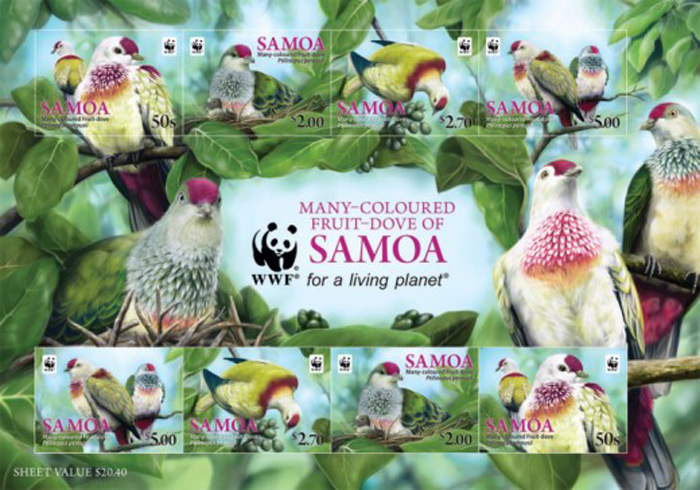
I undertand that you sent something totally different to Koala Books.
Karen: I transitioned from more traditional techniques (such watercolour, acrylics and coloured pencil) to electronic painting, and have been slowly building up pieces that show my versatility. I sent in my folio and a digitally painted dragon character for a personal project I am developing with Michelle Worthington, and it caught the eye of the submissions panel.
Peter: What were you asked to provide prior to being offered a contract?
Karen: Scholastic/Koala Books sent me a manuscript proposal, and asked for a rough pencil sketch of one of the early scenes (with multiple dinosaurs). They also wanted to see a small section as a final coloured piece, to show my concept for the character designs and my final colouring technique. They wanted to get an idea of how I would fill the page with so many dinosaurs. They were also looking at one other artist as a possibility for the title, and the outcome depended on my schedule and the rough sketches as to the final choice of the illustrator.
Did you get an email or a phone call to say that a contract was on its way? I’m sure it was well celebrated …and again when it was negotiated and signed.
I received both. Initially there were 2 congratulatory emails, one from Gordon Jackson (Publisher) and the other from Amanda (Author and designer). Both Amanda and Gordon were very generous in their praise, telling me that the Scholastic product team had taken a look at my illustration sketches and really loved them. I was delighted, thrilled and stunned all at the same time! Before we went any further, confirming me for this title, I was asked to create some more dinosaurs in colour, so they could get an idea of the palette and textures I would use. Amanda also rang me in person to congratulate me and introduce herself, which I thought was a wonderful gesture.
Peter: I love the way you have shown so much emotion in the facial expressions of these characters and I appreciate your skill to make them obviously dinosaur children and to maintain their unique personalities from one spread to the next. Can you tell us how you went about creating these characters – did you do draw dozens of pencil sketches?
Karen: I definitely did a lot of book and internet research, as well as hours of sketching. There was also an excellent dinosaur exhibition on at the museum at the time. I spend many hours drawing and developing each personality and individual look. Children that are really into dinosaurs are experts at naming their favourite types, so it was important each of my characters is recognisable. I wanted my dinosaurs to portray fun, non-scary personalities.
Peter: I presume you had to have a storyboard, page layout ideas and a sample of finished art approved before starting detailed drawing, ready for more checking, and then final art. Were changes to your first ideas suggested? Did you help set the book’s dimensions?
Karen: I submitted the initial storyboard roughs, which conveyed in detail, my vision for the characters and illustration flow. Amanda was the art director and designer for this project, and we discussed the book size and layout design concept from the beginning. I made a couple of my own suggestions, which Amanda liked and we incorporated them into the book design. One idea was for the numbers at the top of each page to have patterns and colours suggesting dinosaur skin. The other inclusion was that of the ladybugs in each scene for the children to find and count.
Peter: Children will certainly enjoy trying to spot all the ladybugs that are trickily hidden amongst foliage and elsewhere. I presume there eight of them on the spread with eight dinosaurs, four on the spread with four dinosaurs, etc …in which case I’m still two short. They are more challenging to find than ‘hidden extras’ in some other books (especially for partially red/green colour-blind people like me).
Karen: Yes. Keep searching, I wanted to make it a bit of a challenge!
((Zoom into the bottom picture of the Dinosaurs swinging from the vine and see how long it takes you to find all 10 ladybugs. P.T.))
Joyously, my first round roughs were accepted and I went straight to finalising finished line drawings. At this point, some changes were made and I could then start the colour work. I submitted each piece of art as it was finished. If there were changes needed (and there were), I would correct them as I was working on the next image.
Peter: What steps and techniques were used in creating a page spread?
Karen: After I have read the manuscript, I highlight the parts of text that are important and jot ideas and notes in the margins. Then I start drawing thumbnail sketches of the page layouts, which are small and very scribbly. It’s how I flesh out my ideas. Next I scan the thumbnails into my computer and enlarge them so I can start another round of sketches. And progress through to a finished rough storyboard:
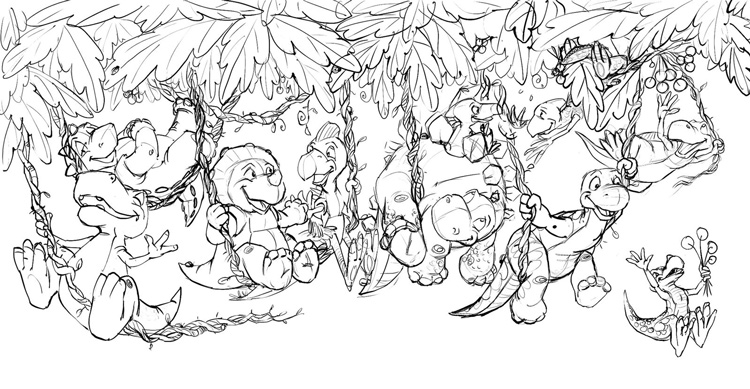
Finished drawing ready for approval, then colouring
Peter: Were tweaks necessary after you delivered the art files and thought everything was finished?
Karen: There were some tweaks to the illustrations after delivery. Sometimes the need isn’t seen until the illustrations are in full colour and final backgrounds are added. Some changes needed to be made to allow more space for type; sometimes more detail or colour corrections were needed; or the dinosaurs needed to swap positions because I had put the two similar coloured dinos together. Fortunately, because these are digital paintings, while still complex, they are more easily manipulated than traditional paintings, and there is no need to start the illustration all over again!
Peter: The ability to design a book cover for maximum buyer appeal is a special skill. Some publishers know exactly what they want from the outset and provide a plan of what is to go where, some ask for a choice of five designs… What was the process for the development of this cover?
Karen: I wanted to reflect the interior horizontal layout of the book and focus on the 10 dinosaur characters that the children will find in the story. Koala Books approved my concept; I made a few changes to actions and positioning of some of the characters and went to final art. Amanda designed the typography and the fabulous idea of one the little fella standing amongst the title lettering.
Peter: Was there a special deadline to be met, for example, copies must be available for the Bologna or London Book Fairs? I know your Facebook posts often said you were super busy! How long did the illustrations and cover take to complete, from the time you first read the story?
Karen: I am not sure if there was a particular reason for the deadline, I would imagine so that it was available to go out in there catalogue to be shown at the Book Fairs. The entire process, from project acceptance, to concept drawings and through to final art delivery, took 6 months. The illustration style I used took a significant time to render, and I was working on other projects concurrently, so it was a very intense and busy period.
Peter: Are there any new books in the pipeline that you can tell us about?
Karen: I am working with a few new authors on their book projects, but as they are yet to be published, we will have to keep them a surprise. Watch this space!
Peter: I’m sure the hard work will pay off and this will be an immensely popular book both here and overseas. Congratulations on its release. Very many thanks for answering these questions.
Karen: Thank you, and thank you to Amanda, Scholastic and Koala Books for asking me to illustrate this fun book. I have grown as an artist because of this opportunity, and hopefully lots of children will enjoy counting along with the 10 Tricky Dinosaurs.
2022 – Ten Tricky Dinosaurs is best purchased from Scholastic
https://shop.scholastic.com.au/Product/8327833/Ten-Tricky-Dinosaurs
This article by Peter Taylor first appeared in Q Review, a former online magazine for members of the Queensland branch of the Children’s Book Council of Australia.

